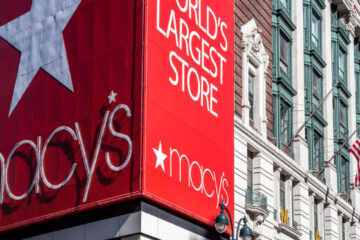The fast-food industry is taking a hit as consumers tighten their spending across the country in response to record inflation, and restaurants that offer fine dining are no exception to this trend.
As many food establishments have found ways to cut corners due to their own struggles with inflated costs and a dip in profits, a major restaurant has just revealed that it is making a controversial change at its locations to help boost its profits.
Related: Chipotle isn’t shy about making a controversial move
Darden Restaurants (DRI) , which owns beloved restaurant chain Olive Garden, has revealed during a recent earnings call that it will soon be upping the Italian chain’s menu prices.
“We do expect pricing for this year to be more in line with inflation, so in that 2.5% to 3% range probably,” said Darden Restaurants Chief Financial Officer Raj Vennam during the call. “But as we think about how that’s going to be spread, we expect it to be more consistent quarter-to-quarter.”
Raj also claims that Olive Garden’s prices were “underpriced about 20% over the last five years” when compared to the consumer price index, which he said increased by 23% during that time period.
The upcoming change to Olive Garden’s menu comes after Darden Restaurants revealed in its most recent earnings report that it so far generated $11.4 billion during the 2024 fiscal year due to a 8.6% increase in total sales across all brands.
A customer carries an Olive Garden shopping bag in Pittsburg, California, US, on Friday, Dec. 9, 2022.
Despite the boost in profits, the company did flag that it is seeing consumers who make less than the median household income, which is $75,000, tighten their wallets, and it’s negatively impacting its fine dining brands.
“Consumers are generally concerned about inflation, and they’re becoming more concerned about the job market,” said Darden Restaurants CEO Rick Cardenas during the call. “And what we’re seeing are some behavior shifts that we had already started to see. So for Q4, transactions from households with incomes below the median were lower than last year. And that’s more pronounced with consumers below $50,000 in income. And these impacts were even greater in our fine dining brands.”
Consumers are pulling away from restaurants
The change in behavior from consumers is happening at a time when many are opting to eat at home as opposed to eating out at restaurants. According to a recent survey from Vericast, restaurant food prices have spiked by 5.1% annually, compared to the 1.2% increase of grocery prices.
More Food + Dining:
Chipotle isn’t shy about making a controversial move Nestlé rejects proposal that would have forced it to sell healthier foodSubway is breaking up with these popular drink brands
In the survey, 68% of consumers said that they prefer to get their food from grocery stores instead of restaurants in an effort to cut costs, and 67% said that higher restaurant bills make dining out too expensive.
“The steadily increasing cost of dining out is testing the limits of what consumers can and will spend,” said Dana Baggett, executive director of Restaurant Division at Vericast, in a press release. “There’s a noticeable decrease in consumers dining out, especially with consumers that have a household income under $75,000.
Related: Veteran fund manager picks favorite stocks for 2024


